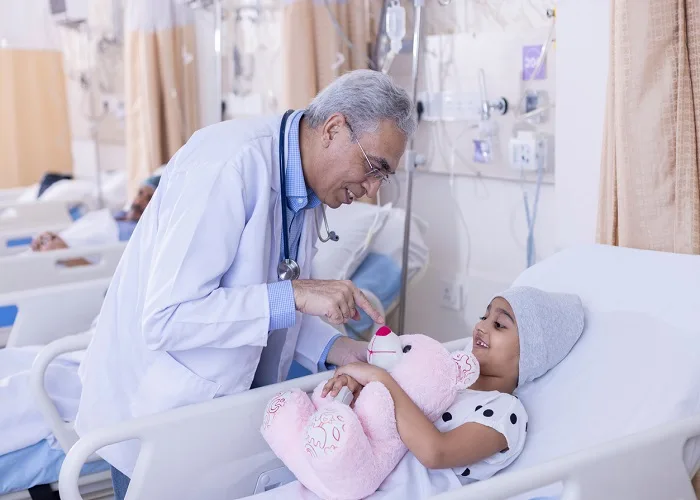Cancer and neoplasms
Childhood cancer survivors face serious health hurdles later in life – US review
Researchers have warned that people who’ve had childhood cancer are highly likely to face physical and mental health challenges later in life, with 95% developing a “significant health problem” related to their cancer or treatment by the age of 45.
The team reviewed 73 studies, including 39 cohort studies that followed patients over time, and found around 15 000 children and adolescents – up until the age of 19 – are diagnosed with cancer every year and that 85% now live five years or more beyond their diagnosis.
That’s compared with just 58% in the 1970s, according to the American Cancer Society.
However, the research documented a variety of concerns for young cancer survivors, ranging from subsequent hormone issues to reproductive health challenges, problems with muscles and bones, cognitive impairment and more, reports The Washington Post.
Among those childhood cancer survivors with later health problems, the researchers, led by the University of Alabama, write that at least one-third will endure “severe or potentially life-threatening chronic health problems”. Most common were endocrine disorders, subsequent neoplasms (abnormal growths) and cardiovascular disease.
Many new cancers appeared in places that had undergone radiation during treatment, with radiation fields on the chest, brain, neck, and abdomen or pelvis of “particular concern”.
Those with higher radiation doses had higher risk, experiencing everything from breast cancer to central nervous system tumours and basal cell carcinoma.
The type of childhood cancer also affected risk.
Those diagnosed with a brain tumour, treated with cranial irradiation or who underwent allogeneic hematopoietic stem cell transplantation – a treatment that gives stem cells from a healthy donor to a sick recipient – were at highest risk, the researchers found.
Mental health was another concern, with depression rates ranging from 2.3% to 40.8%, compared with a nationwide average of 9.6%. Suicide risk was also higher for those who’d undergone cancer as children, with the highest risk in people 28 and older.
Compared with the general population, adults who survived childhood cancer had a 1.4-fold higher risk of death by suicide than their counterparts who hadn’t been sick as children.
Given the ongoing risk, the researchers, whose study was published in JAMA, recommend that survivors “receive lifelong care focused on health promotion and early detection of potential complications from their cancer treatment”.
They encourage providers to inform patients about the potential long-term effects of treatment, and say survivors should get annual physicals and preventive care.
Study details
Clinical Care for People Who Survive Childhood Cancer: A Review
Smita Bhatia, Emily Tonorezos, Wendy Landier, et al.
Published in JAMA on 26 September 2023
Abstract
Importance
An estimated 15 000 children and adolescents aged 0 to 19 years are diagnosed with cancer each year in the US, and more than 85% survive for at least five years. By 45, approximately 95% of people who survive childhood cancer will develop a significant health problem related to the childhood cancer diagnosis or its treatment.
Observations
Approximately 500 000 people currently alive in the US have survived childhood cancer. The most common severe or life-threatening chronic health problems related to childhood cancer or its treatment are endocrine disorders such as hypothyroidism or growth hormone deficiency (44%), subsequent neoplasms such as breast cancer or thyroid cancer (7%), and cardiovascular disease such as cardiomyopathy or congestive heart failure, coronary artery disease, and cerebrovascular disease (5.3%). Medical conditions related to a cancer diagnosis during childhood or adolescence are most commonly caused by the radiation therapy and the chemotherapies used to treat cancer and may develop at varying lengths of time after exposure to these treatments. Individuals at highest risk for developing treatment-related health problems include patients with brain cancer treated with cranial irradiation (approximately 70% develop severe or life-threatening health problems) and allogeneic hematopoietic stem cell transplant recipients (approximately 60% develop severe or life-threatening health problems).
Individuals at the lowest risk for developing treatment-related health problems include those who survived solid tumours (such as Wilms tumour) treated with surgical resection alone or with minimal chemotherapy, for whom the prevalence of subsequent health problems is similar to people who did not have cancer during childhood or adolescence. People diagnosed with childhood cancer in the 1990s who survived for at least five years after the cancer diagnosis have a shorter lifespan (by about nine years) vs children who were not diagnosed with cancer in the 1990s.
Conclusions and Relevance
Approximately 500 000 individuals currently alive in the US have survived childhood cancer. The most common adverse effects in individuals who survived childhood cancer are endocrine disorders, subsequent neoplasms, and cardiovascular disease. There is a need for clinicians and patients to have heightened awareness of these complications.
JAMA Network article – Clinical Care for People Who Survive Childhood Cancer: A Review (Open access)
The Washington Post article – Most childhood cancer survivors face serious health problems as adults (Restricted access)
See more from MedicalBrief archives:
Safer treatments urgently needed for child cancer patients
Early cancer diagnosis critical for children, say SA experts
SA’s child cancer sufferers falling through the cracks
Experts want cancer treatments trialled in children

